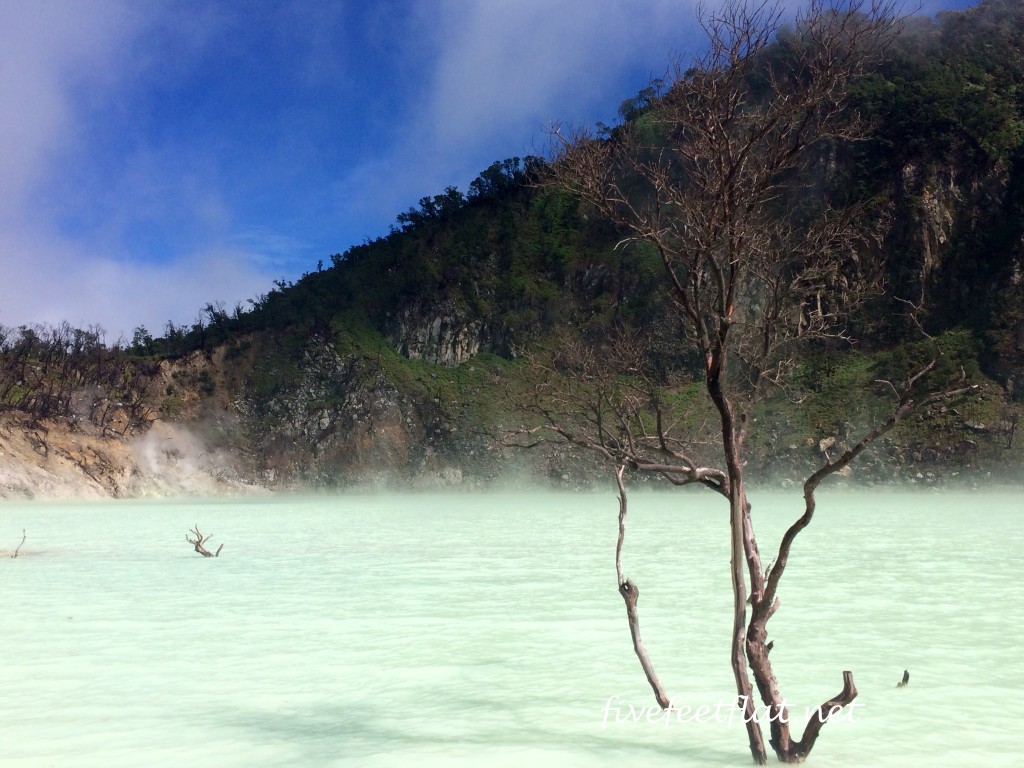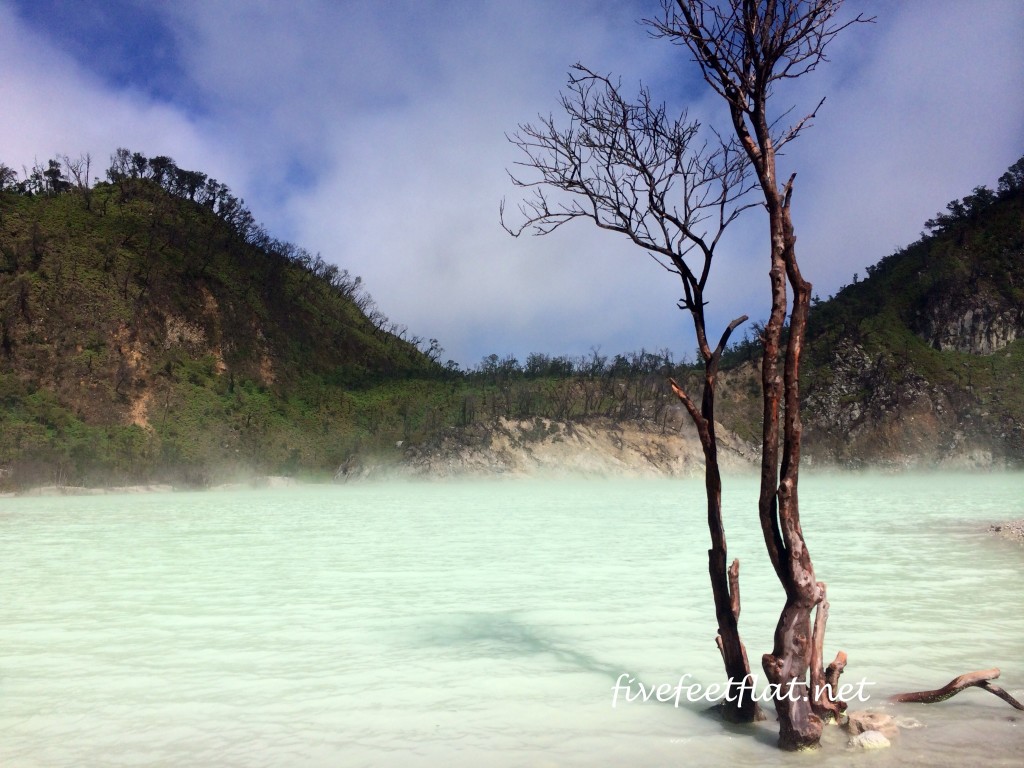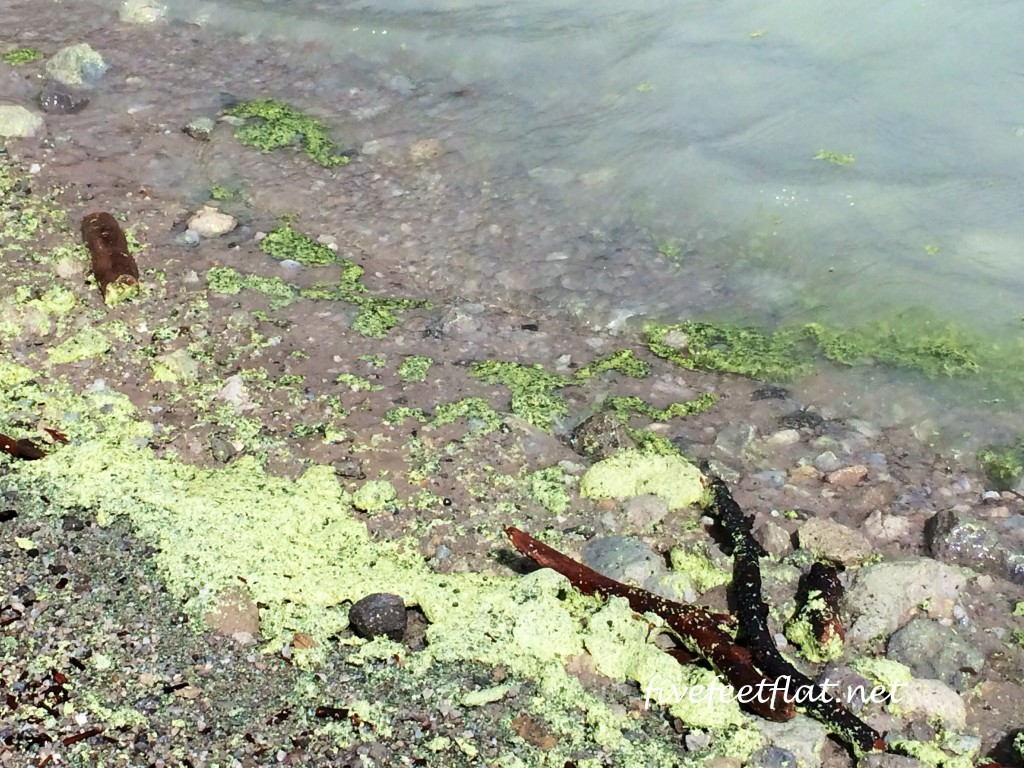Kawah Putih in Bandung
I could smell the White Crater before I even reached it.
Rotten eggs, I thought, as I went closer. No, scratch that. Make that thousands of rotten eggs.
This particular brand of perfume wasn’t new to me. The first time I caught a whiff of Eau de Volcanic Crater – which is what it was, really – was when I visited Rotorua as a child. Rotorua is where much of New Zealand’s thermal activity takes place and the smell of sulfur is not something one forgets too quickly.
Kawah Putih or White Crater, however, was something else. You know that a place is extra special when it has its own distinctive smell. I had never stood this close to a living, steaming volcanic crater lake.
Kawah Putih is one of two craters that make up Mount Patuha, a dormant volcano that lies some 40km south of Bandung in West Java, Indonesia. What sets Kawah Putih apart from its sister crater is that it has a lake, while the other crater is dry.
It was this lake that we had come to see.
This is no ordinary lake. The water is highly acidic and its colour ranges from an otherworldly pale blue-green to an incredible turquoise depending on the weather and concentration of the sulfur, which is where the smell of rotten eggs comes from. Here’s a tip: I wouldn’t recommend you drink the water.
The lake is said to have been discovered by a German botanist in 1837. Dr Franz W. Junghuhn had heard local villagers talking about a mysterious forest on a hill where birds refused to fly near and if they did, they would end up dead. Junghuhn decided to investigate, and discovered Kawah Putih.
Kawah Putih was the highlight of my recent media trip to Bandung. I had visited the city two years ago but I had come with relatives and never had the chance to see anything else apart from the insides of the outlet stores that Bandung is famous for.
If you enjoy hiking, you might be interested to know that there are several walking trails in the area. The trails go around the lake and can take you up Mount Patuha, allowing you to view Kawah Putih from above.
Or you can simply choose to stay by the lake, take photographs and enjoy the (not so) fresh air.
Visiting:
Both of Mount Patuha’s craters are dormant and stable, with no records of significant volcanic activity since 1600 so visiting Kawah Putih is safe, but do try not to fall in. The lake is 2,500 metres above sea level, which means it can get chilly. You might want to bring a light jacket.
The strong smell can be overpowering for some people, so bring a face mask. If you don’t have one, don’t worry, you’ll see lots of vendors selling masks as you approach the crater. I don’t suffer from asthma and have pretty healthy lungs but after a while, I did find breathing a little difficult.
Entry fees:
Kawah Putih is open daily from 7am-5pm (West Indonesia time). You’ll see a parking lot for private cars and motorcycles at the gate. Indonesians pay 15,000 rupiah to get in while foreigners pay 30,000 rupiah. Prices, however, might have gone up by the time you visit.
Getting there:
Kawah Putih is located near a small town called Ciwidey and depending on traffic, is about two and a half hours from Bandung.
There are two ways to get there:
First- With your own transport. This will involve either renting a car or motorbike, or hiring a motorcycle taxi from Bandung. While a motorcycle taxi should be around 100,000Rp, renting a car (self-drive) is about US$100 per day. You’ll be better off hiring a car and driver, which will cost you around 350,000-500,000Rp per day. Renting a motorbike will be your cheapest option.
Second- With public transport. This will be much cheaper, but more complicated. This will involve you taking two angkots (public van) from Bandung, a bus to Ciwidey and another angkot to the entrance of Kawah Putih.
Note that for both these options, you will be ferried from the entrance (there are car parks at the bottom) to the top of Kawah Putih by an orange van- a return journey costs 15,000 Rp. If, however, you choose to drive your car up to Kawah Putih, you’ll have to pay an extra 150,000Rp.
*My press trip to Bandung was courtesy of the Ministry of Tourism, Indonesia but as always, all opinions expressed here are mine. A big ‘Thank you’ goes out to the Ministry and the organising committee for their help.
© 2015, Anis. All rights reserved.














As someone who studied biotechnology, these craters are like a treasure chest of bacteria! The coloration of these craters are either caused by the presence of naturally occurring minerals or minerals secreted by bacteria that thrives in hot environment, called thermophiles. The only problem is trying to extract these creatures because they will die if we isolate them in room temperature!
Woah, now that was interesting. Thanks Dan :). I need to read up more on these thermophiles.
Lets visit bandung again mbak anis 😀
Boleh saja! But I hope to visit other places too next time I visit Indonesia 🙂